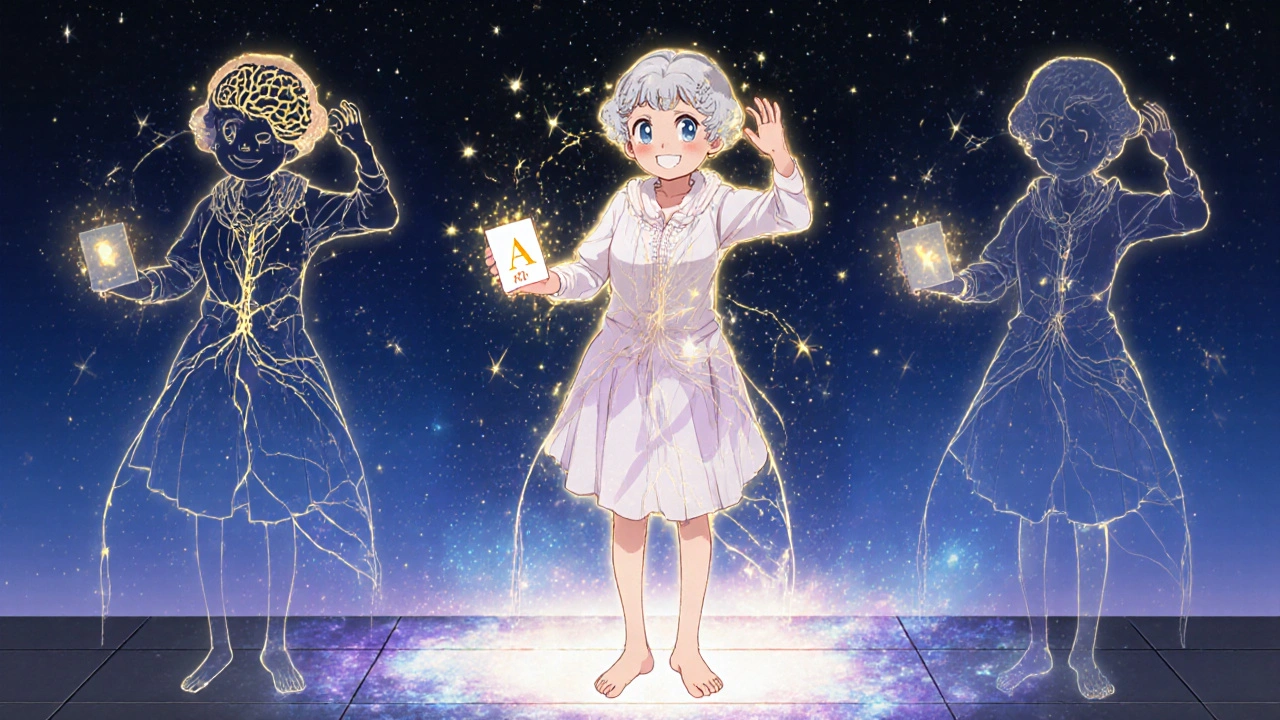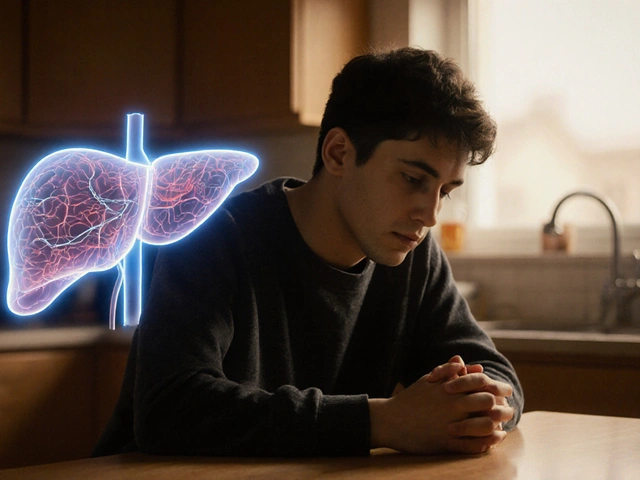Every year, one in three adults over 65 falls. For many, it’s not just a stumble-it’s a broken hip, a hospital stay, or a life changed forever. And behind most of these falls is something no one talks about: a quiet failure in your inner ear.
Your vestibular system isn’t just about hearing. It’s your body’s internal GPS. Located deep inside your skull, it tells your brain where you are in space, how fast you’re moving, and whether you’re leaning too far left or right. When it gets damaged-by aging, infection, or injury-you don’t just feel dizzy. You lose your balance. You hesitate before stepping off a curb. You avoid walking in the dark. You start relying on walls, furniture, or your spouse just to get from the bedroom to the bathroom.
This isn’t normal aging. It’s a treatable condition. And the solution isn’t more pills or surgery. It’s vestibular rehabilitation therapy-a set of simple, daily exercises that retrain your brain to compensate for inner ear damage. Studies show it reduces falls by 53%, cuts nausea by 42%, and improves balance by 73%. Most people see real change in just 6 to 8 weeks.
How Vestibular Therapy Works (No Magic, Just Science)
Vestibular rehabilitation doesn’t fix your inner ear. It fixes how your brain listens to it.
Think of your vestibular system like a broken microphone. It’s still sending signals, but they’re messy, delayed, or wrong. Your brain used to trust those signals. Now it doesn’t. So it starts ignoring them-or overreacting to them. That’s when you feel dizzy, off-balance, or like the room is spinning.
Vestibular therapy works by forcing your brain to relearn how to interpret those signals. It’s not about making the inner ear work better. It’s about making your brain better at using what it’s still getting.
The science behind it is called neuroplasticity. Your brain can rewire itself. But only if you give it the right practice. Just like learning to ride a bike after years off, your brain needs repetition, consistency, and a little discomfort to get back on track.
The Four Goals of Vestibular Rehabilitation
Every effective program targets four outcomes:
- Improve gaze stability-so your eyes stay locked on a target even when your head moves. This stops the world from blurring when you walk or turn your head.
- Enhance postural stability-so you can stand still, walk on uneven ground, or reach for something without swaying or falling.
- Reduce vertigo and dizziness-not by avoiding triggers, but by slowly building tolerance to them.
- Restore daily function-so you can shower, cook, drive, or walk the dog without fear.
These aren’t vague goals. They’re measurable. In clinical studies, patients improved gaze stability by 68% and balance by 73% after just 8 weeks of daily exercises.
The Core Exercises (Do These Daily)
You don’t need special equipment. You don’t need a gym. You just need 5 to 10 minutes, 3 to 5 times a day.
1. Gaze Stabilization
This is the foundation. Hold a card with a letter or small picture at eye level. Focus on it. Now, slowly move your head side to side-like you’re saying “no.” Keep your eyes locked on the letter. If it blurs, you’re doing it right. Your brain is learning to ignore the head movement and keep your vision steady.
Start with 10 repetitions. Do this 3 times a day. After a week, try it while walking slowly in a straight line. Then try it while turning your head up and down.
2. Balance Training
Stand with your feet together. Hold onto a chair if you need to. Close your eyes. How long can you stand without swaying? Most people can’t do more than 5 seconds. That’s normal if your vestibular system is damaged.
Now try standing on one foot. Hold the chair. Lift one foot. Hold for 10 seconds. Switch. Do this 5 times per side, twice a day.
Next, stand on a folded towel. Or stand on a foam cushion. These surfaces trick your feet into sending confusing signals-forcing your brain to rely more on your inner ear. That’s the point.
3. Habituation Exercises
These are the ones people avoid. Because they make you dizzy. And that’s exactly why they work.
Turn your head quickly from side to side while sitting. Or stand up quickly from a chair. Or spin in a circle 3 times and stop. Do it slowly at first. Do it only once or twice a day. You’ll feel dizzy. That’s okay. The dizziness will fade after 10 to 20 seconds. Do it again tomorrow. And the next day. Within a week, the dizziness won’t come back as strongly. Your brain is learning: This movement isn’t dangerous.
4. Walking and Turning
Walk 10 steps forward. Stop. Turn 180 degrees. Walk back. Do this 5 times. Then add a twist: turn your head left as you step right. Turn your head right as you step left. Now try it while carrying a cup of water. Don’t spill it. That’s the challenge.
Walk in a grocery store aisle. Walk around furniture at home. Walk on the sidewalk, not just the flat path. The goal isn’t to avoid uneven ground-it’s to train your body to handle it.

Who Benefits? (Spoiler: Almost Everyone)
Vestibular therapy works for:
- People with benign paroxysmal positional vertigo (BPPV)-the most common cause of dizziness, affecting 2.4% of the population.
- Those with vestibular neuritis-an inner ear infection that causes sudden, severe dizziness.
- Patients with Meniere’s disease-who deal with spinning, ringing, and hearing loss.
- Older adults with general balance decline-even if no specific diagnosis exists.
- People recovering from concussions or head injuries.
Age doesn’t matter. Fitness level doesn’t matter. Even people with arthritis, diabetes, or heart conditions can do these exercises safely-with guidance.
One patient, Rhonda, from Texas, had dizzy spells so bad she couldn’t read or drive. After 7 weeks of daily exercises, she went back to gardening. Another Reddit user went from 3 to 4 falls a week to zero in 12 weeks. One man who couldn’t read while walking-because his vision bounced-could finally read his newspaper on the bus.
What Doesn’t Work
Medication won’t fix this. Anti-dizziness pills like meclizine might help for a few days, but they don’t retrain your brain. They just numb the symptoms. Long-term use can make things worse.
Surgery? Only for rare cases. Most balance problems don’t need a scalpel. They need repetition.
And avoiding movement? That’s the biggest mistake. If you stop turning your head, stop walking fast, stop going out in crowds-you’re training your brain to stay stuck. The more you avoid, the longer the dizziness lasts.

How to Start
You don’t need to see a specialist right away. But you should.
Start by asking your doctor for a referral to a physical therapist trained in vestibular rehabilitation. Not all PTs are trained in this. Look for clinics that mention “vestibular therapy,” “balance rehab,” or “dizziness treatment.” Hospitals like Penn Medicine, Princeton Sports and Family Medicine, and Texas Health Resources have dedicated programs.
At your first visit, they’ll do a quick assessment: how well you stand, how your eyes track movement, whether you have nystagmus (involuntary eye shaking). Then they’ll give you a personalized plan.
Most people do 1 to 2 in-person sessions a week and 3 to 5 home sessions daily. Each session lasts 5 to 15 minutes. That’s it.
Progress isn’t linear. Some days you’ll feel better. Other days you’ll feel worse. That’s normal. Dizziness is a sign you’re doing the work. It’s not a setback-it’s feedback.
Real Results, Real Time
By week 2: You notice you don’t need to hold the rail as much on the stairs.
By week 4: You can turn your head while walking without feeling like you’ll fall.
By week 6: You’re back in the grocery store. You’re reading while moving. You’re not afraid of the dark.
By week 8: You’re walking in the park. You’re not thinking about balance anymore.
That’s the goal. Not to be perfect. Not to be fearless. But to be free.
One study showed 89% of patients regained the activities they’d stopped doing-cooking, driving, playing with grandchildren-within 8 weeks. That’s not luck. That’s science.
What Comes Next
The field is evolving. Some clinics now use virtual reality to simulate real-world challenges-like walking through a busy street or riding a moving bus-inside a safe, controlled environment. Motion sensors track your movement and adjust difficulty in real time.
But the core hasn’t changed. It’s still about your brain, your body, and your daily practice.
Balance isn’t something you’re born with. It’s something you maintain. And if it’s broken, you can rebuild it. Not with pills. Not with machines. But with your own movement.
Start today. One head turn. One balance hold. One step forward.
Your future self will thank you.
Can vestibular exercises help if I’ve had dizziness for years?
Yes. Vestibular rehabilitation works even for long-standing issues. Studies show it helps patients with symptoms lasting months or years, as long as the vestibular damage is stable. The brain can still relearn-even after decades. Consistency matters more than how long you’ve been dizzy.
Do I need special equipment for these exercises?
No. You only need a chair, a wall for support, and maybe a folded towel or pillow for balance challenges. No machines, no apps, no expensive gear. The exercises rely on your own body and movement, not technology.
What if the exercises make me sick?
It’s common to feel nauseous or dizzy during the first few sessions. That’s a sign your brain is processing new information. Keep it mild-start with short sessions. If you feel sick, stop for 10 minutes, sit down, and breathe. Don’t push through vomiting. Over time, the nausea fades. It’s part of the healing process.
How often should I do the exercises?
Three to five times a day, for 5 to 10 minutes each session. Short, frequent practice is far more effective than one long session. Think of it like brushing your teeth-daily, consistent, and brief. Missing a day isn’t the end. Just get back to it the next day.
Can I do this on my own, or do I need a therapist?
You can start on your own with basic exercises like gaze stabilization and standing balance. But seeing a vestibular-trained physical therapist first is strongly recommended. They’ll rule out other causes, confirm your diagnosis, and customize the program to your specific needs. A wrong exercise can make things worse. A right one can change your life.
Is this covered by insurance?
In most cases, yes. Vestibular rehabilitation is billed as physical therapy. Medicare, private insurance, and many public health systems cover it when prescribed by a doctor. Check with your provider, but most patients pay only a co-pay per session.






Comments
Andy Louis-Charles
November 24, 2025 AT 02:18 AMJust started the gaze stabilization exercise today. Held a card and moved my head side to side while focusing on the letter. Felt like my brain was rewiring itself. 😅
Did it 3 times already. My eyes aren't blurring as much. Small win.
Akash Chopda
November 24, 2025 AT 19:08 PMThey dont want you to know this works because pharma makes billions off dizziness pills. The inner ear is controlled by the government through 5G signals. Do the exercises if you want but dont trust the system.
Sam Jepsen
November 26, 2025 AT 10:04 AMYES. This is the kind of post that changes lives. I did this for my dad after his stroke. He went from needing a walker to walking the dog again in 10 weeks. No magic. Just consistency.
Start small. Do one set. Then do it again tomorrow. That's the secret. Not intensity. Not speed. Just showing up.
Yvonne Franklin
November 26, 2025 AT 10:30 AMDid this for 6 weeks after vertigo hit me. No meds. No surgery. Just the head turns and standing on one foot.
Now I hike without fear. My balance is better than it was at 30.
Bartholemy Tuite
November 27, 2025 AT 08:50 AMMan I love this stuff. I'm from Dublin and we don't talk about balance like this but holy hell it works. I had this weird wobbly feeling after a concussion five years ago. Tried everything. Pills made me sleepy. Surgery was a no go.
Then I found this. Started with the chair thing. Did it while watching TV. Felt like an idiot at first. Head spinning. But after a week? I could walk the dog without holding the fence. Now I do it barefoot on the grass. Feels like my body finally remembered how to work. You dont need a clinic. You just need to move. Even if it makes you feel sick. Thats the point. Your brain is learning. And its worth it. I even started cooking again. Used to drop the spoon every time I turned my head. Now I make full meals. No joke. This is the real deal.
Neoma Geoghegan
November 27, 2025 AT 23:53 PMNeuroplasticity + habituation = game changer. Do the exercises daily. No exceptions. The dizziness is feedback not failure. You're rewiring. Keep going.
Victoria Stanley
November 29, 2025 AT 21:55 PMThank you for sharing this. I've been hesitant to try because I thought it was just 'old age'. But this makes it clear it's treatable. I'm starting tomorrow with the gaze exercise. No pressure, just progress.
steven patiño palacio
November 30, 2025 AT 21:12 PMOne correction: vestibular rehabilitation is not 'just' about neuroplasticity. It's also grounded in sensory reweighting, where the brain shifts reliance from the damaged vestibular system to visual and somatosensory inputs. This is well-documented in the Journal of Neurophysiology. The exercises work because they force adaptive compensation, not just repetition.
stephanie Hill
December 1, 2025 AT 08:11 AMSo now we're supposed to believe that a bunch of head turns can fix what Big Pharma and the FDA ignore? I've been dizzy for 12 years. I've seen 7 specialists. They all say 'it's age'.
Now you're telling me I just needed to stare at a card while shaking my head? How convenient.
Jeff Hicken
December 1, 2025 AT 12:06 PMwhy are people so obsessed with this? i did the exercises for 2 days and felt worse. now i have to sit down every time i turn my head. this is a scam. just take the pill. its easier.
Vineeta Puri
December 2, 2025 AT 08:24 AMIt is imperative to acknowledge that vestibular rehabilitation constitutes a scientifically validated therapeutic modality grounded in evidence-based clinical protocols. The consistent execution of prescribed exercises yields measurable improvements in functional mobility and reduction in fall risk among geriatric populations. I strongly recommend consultation with a certified vestibular therapist prior to initiating any regimen.
Douglas cardoza
December 4, 2025 AT 05:17 AMMan I tried this after my grandma fell. She did the towel balance thing and now she's dancing at family parties again. No joke. She says it feels like her body came back online.
Just do it. Even if it's just one minute.
Adam Hainsfurther
December 6, 2025 AT 00:00 AMI'm curious - does this work for vestibular migraines too? I get the dizziness without the spinning. Just a constant off-balance feeling. I've been told it's neurological but no one ever gives me exercises. Is this the same mechanism?
Rachael Gallagher
December 6, 2025 AT 06:14 AMThey don't want you to know balance is a political construct. Your body doesn't need to 'relearn' anything. It's the system that broke you. Do the exercises if you want. But don't pretend this fixes capitalism.